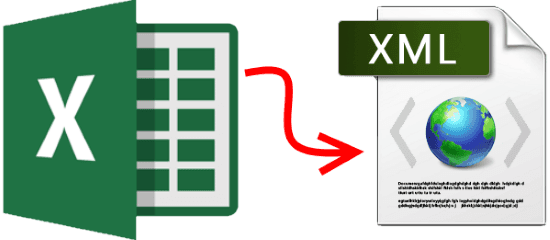Currently Empty: $0.00

Have you ever found yourself in a situation where you need to convert an Excel spreadsheet into XML format? Whether you’re a business professional, a data analyst, or just someone looking to explore new skills, knowing how to convert Excel to XML can be a valuable tool in your arsenal. In this comprehensive guide, we will walk you through the entire process step by step, making it easy for you to tackle this task with confidence.
Table of Contents
Table of Contents
- Introduction
- Understanding the Basics
- Why Convert Excel to XML?
- Step-by-Step Guide
- Step 1: Prepare Your Excel Data
- Step 2: Use Excel’s Built-in Features
- Step 3: Save as XML
- Benefits of XML
- Common Pitfalls
- Tips for Efficient Conversion
- Conclusion
- Useful Resources
- FAQs
Introduction
XML, which stands for Extensible Markup Language, enjoys widespread usage as a preferred format for organizing and preserving data. It provides a way to represent data in a hierarchical format, making it easily readable by both humans and machines. On the other hand, Microsoft Excel is a powerful spreadsheet tool that is commonly used for data analysis and management.
This guide will show you how to bridge the gap between Excel and XML, allowing you to convert your Excel data into XML format efficiently. By the end of this tutorial, you’ll have a clear understanding of why and how to perform this conversion, as well as the benefits it can offer.
Understanding the Basics
Why Convert Excel to XML?
Before diving into the process, let’s explore why you might need to convert Excel to XML:
- Data Integration: XML is often used to integrate data from various sources, making it easier to work with diverse datasets.
- Web Development: XML is a standard format for exchanging data on the web. If you’re involved in web development, knowing how to work with XML data is invaluable.
- Compatibility: Converting Excel data to XML ensures compatibility with systems that require XML data feeds.
Now, let’s get into the step-by-step guide.
Step-by-Step Guide
Step 1: Prepare Your Excel Data
The first step is to ensure your Excel data is well-structured. This includes organizing your data into rows and columns with clear headers. Properly labeled columns make it easier to map your Excel data to XML elements.
Step 2: Use Excel’s Built-in Features
Excel provides features like ‘Data Validation’ and ‘Data Types’ that can help ensure consistency and accuracy in your data. Utilizing these features can streamline the conversion process.
Step 3: Save as XML
- Select ‘File’ in Excel.
- Choose ‘Save As.’
- Select ‘XML Data (*.xml)’ as the file format.
- Customize XML mapping options as needed.
- Click ‘Save’ to convert your Excel data to XML.
Benefits of XML
Converting Excel to XML offers several advantages:
- Data Structure: XML allows you to define a clear structure for your data, making it easy to understand and process.
- Interoperability: XML is platform-independent and can be easily shared between different software applications.
- Data Validation: XML can enforce data validation rules, ensuring data integrity.
Common Pitfalls
While the conversion process is straightforward, there are some common pitfalls to watch out for, such as:
- Data Loss: Be cautious about potential data loss during the conversion, especially when dealing with complex Excel files.
- Mapping Errors: Incorrectly mapping Excel columns to XML elements can lead to data inconsistencies.
Tips for Efficient Conversion
To ensure a smooth conversion process, consider these tips:
- Backup Your Excel File: Always create a backup of your Excel file before attempting the conversion.
- Test the XML: After conversion, thoroughly test the resulting XML file to ensure it meets your requirements.
Conclusion
Converting Excel to XML may seem daunting at first, but with the right knowledge and approach, it becomes a manageable task. XML’s flexibility and compatibility make it a valuable format for data integration and web development projects. By following the steps outlined in this guide and keeping our tips in mind, you’ll be well-equipped to tackle this process confidently.
Useful Resources
For further insights and advanced techniques on working with XML, consider exploring these high-authority websites:
- W3Schools XML Tutorial: W3Schools offers comprehensive tutorials on XML, including advanced topics and examples.
- XML.com: XML.com is a hub for XML-related articles, tutorials, and news. It’s a valuable resource for staying up-to-date with XML developments.
FAQs
Q1: Is there a limit to the size of an Excel file I can convert to XML?
A1: There isn’t a strict size limit, but larger files may take more time to convert and could lead to performance issues. It’s a good practice to optimize your Excel data before conversion.
Q2: Can I convert XML back to Excel if needed?
A2: Yes, it’s possible to convert XML data back to Excel, but the process may require additional steps and data mapping.
Q3: Are there any tools that automate the Excel to XML conversion process?
A3: Yes, there are third-party tools and add-ins available that can simplify the conversion process and offer advanced features.

